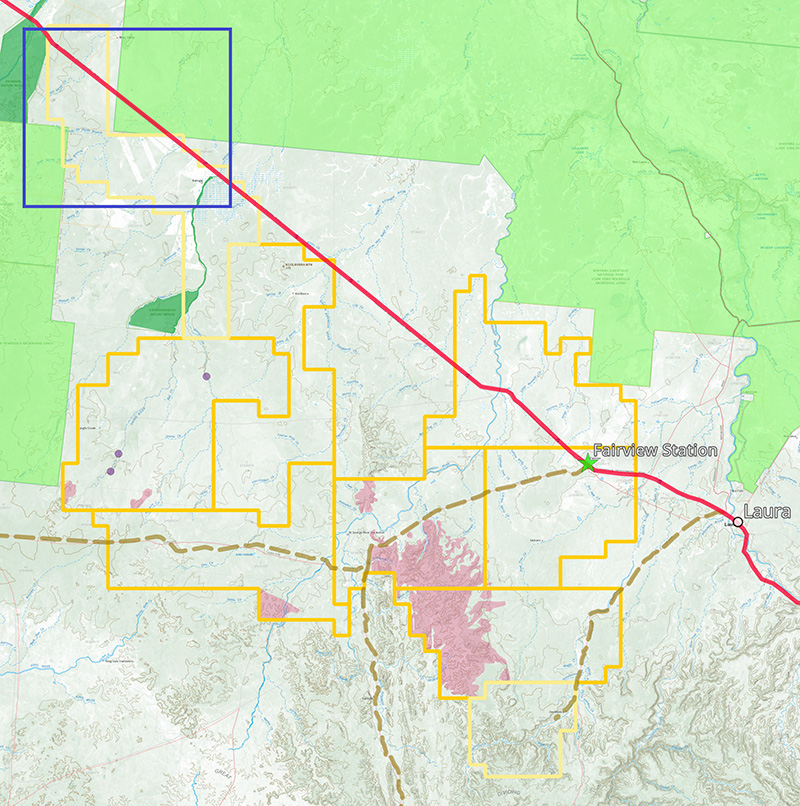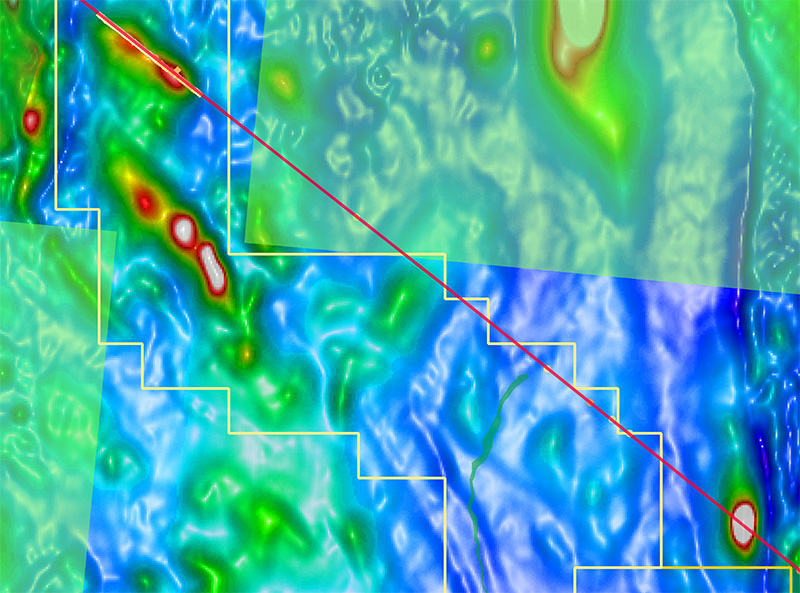Summary
| ANOMALOUS METALS | Anomalous in soils: Ni, Cu, Pd, Ag, REE Stream seds: Au, Pt, Pd, |
| MAGNETICS | Two large dyke-like/chonolithic features that may be feeders to a large layered complex. |
| DEPTH | <100-200m to base. |
| ASSESSMENT | Several dyke-like intrusives trending southeast over a 20km strike. possible feeders to large layered complex to the southeast. intrusives appear disjointed with faulted segments that are analogous to chonoliths similar to Jinchua. |
| PRIORITY | High. Requires early infill soils and ground based gravity and EM. |
Details
This area is a prime target as it contains two large dyke-like/chonolithic features that may be feeders to a large layered complex. The smaller northern dyke has a Cu-Ni-Pd-Au-Ag-Co coincident partial leach, ME-MS23, soil anomaly over an axial zone:
- Several dyke-like intrusives trending southeast over a 20km strike and possible feeders to interpreted large layered complex to the southeast (Koolburra).
- The prospect area location is near a major cratonic boundary with an age that may be Neoproterozoic (~830Ma and younger) and related to the break-up of the Rodinian supercontinent which is the same as the Jinchuan deposit in southwest China.
- The intrusives appear disjointed with faulted segments that are analogous to chonoliths which are the hosts for the world-class Jinchuan, Norilsk and Gonneville (Chalice’s world-class PGE-Cu-Ni-Co deposit) deposits. At Jinchuan there are three interconnected, mineralised sub-chambers and the magnetic character of the central NW-SE magnetic feature at Dead Horse is very similar in scale and strike length (6.5km) to the Jinchuan deposit.
- More magnetic southeast segments of the central NW-SE magnetic feature at Dead Horse and the southeast segment of the northern NW-SE trending magnetic feature may reflect sulphide mineralised zones (chalcopyrite-pentlandite-PGE) with pyrrhotite and magnetite.
- Other more discrete magnetic features along and adjacent to the trends could also be related to pyrrhotite mineralisation (with other associated sulphides).
- Regional Government gravity imagery suggests a discrete anomaly with part of the northern intrusive, but gravity data station spacings are at 4km or wider, which is not effective for the definition of the scale of the target areas and other smaller intrusive bodies.
- Preliminary soil partial leach, ME-MS23, geochemistry over northern magnetic feature shows anomalous and mostly coincident Cu-Ni-Pd-Au-Ag associated with the more strongly magnetic section of the intrusive(s).
- Detailed soils are planned and should be followed up by ground gravity and MLEM.
Location


